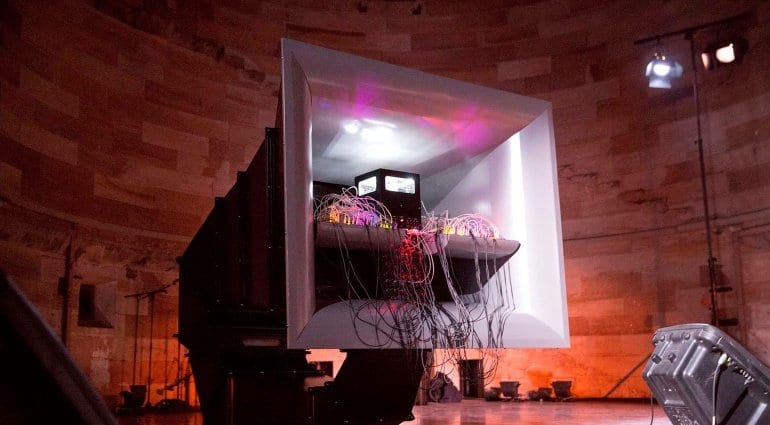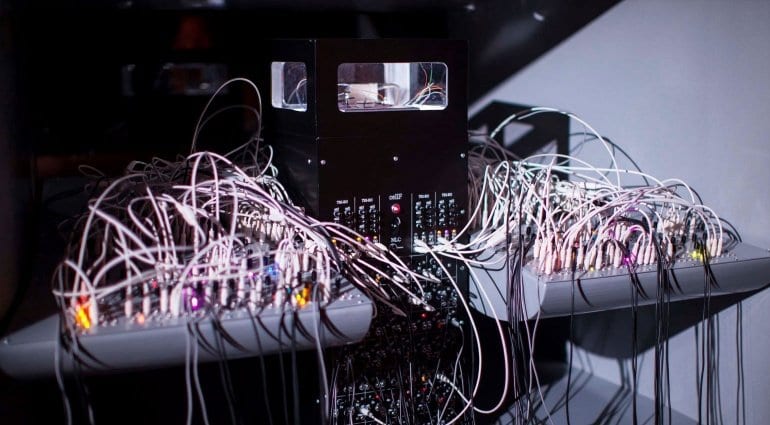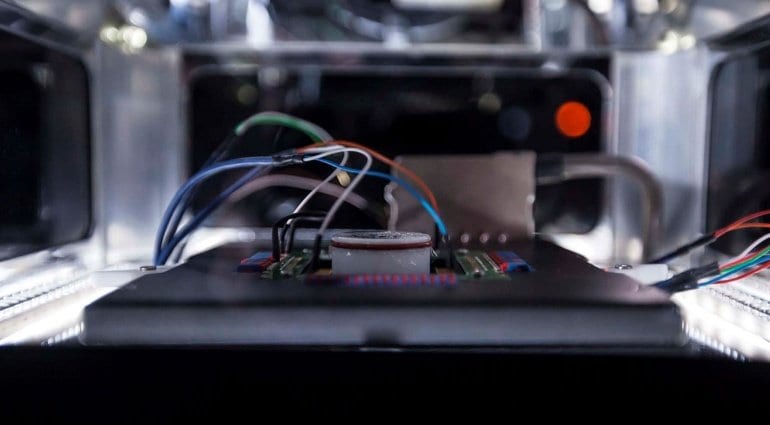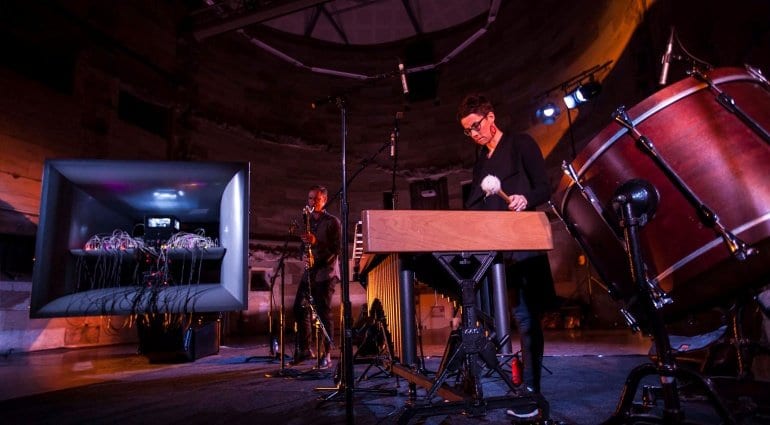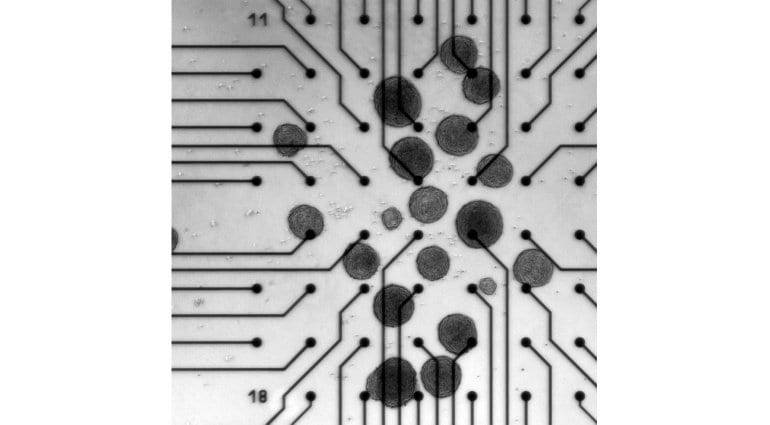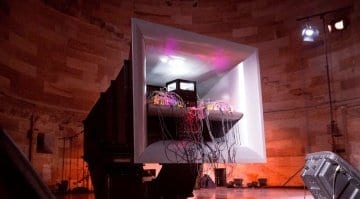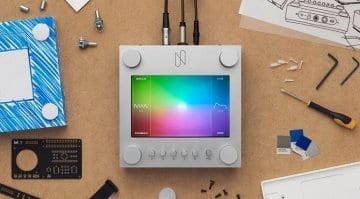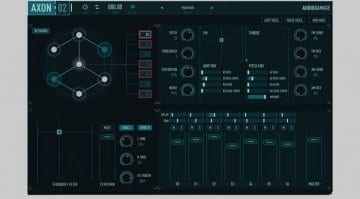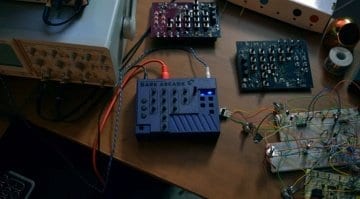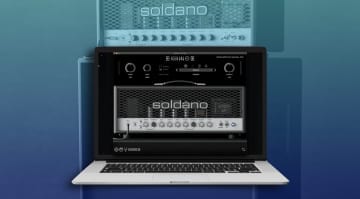cellF: Cybernetic neural synthesizer grown from the creators cells
Guy Ben-Ary, frustrated with his lack of rock stardom, has harvested cells from his own body to grow a “rock star in a petri dish”. CellF’s brain is an induced biological neural network that controls an array of modular synthesizers. What he rather sloppily calls “wet-alogue” – ewww, that really doesn’t conjure up anything other than horror for me.
cellF
There’s a lot of biological jiggery-pokery involving Pluripotent Stem cell technology, the pushing of stem cells to be neural and then fully differentiated into neural networks over a Multi-Electrode Array (MEA). This is what you find in the petri dish.
The MEA dishes consist of a grid of 8×8 electrodes which can record the electrical signals produced by the neurons, whilst also stimulating them – “essentially a read-and-write interface to the brain”. The neural network then grows over the electrodes. The collected micro-volt signals are routed through an amplifier and then into the synthesizer array. There’s no programming, no computer, just biological matter and analogue circuits.
This is of course very simplistic:
These neural networks contained approximately 100,000 cells. Human brains contain approximately 100 billion neurons, interconnected via trillions of synapses. The ‘brain’ used to control cellF is essentially a symbolic one to entice the viewer to consider future possibilities that these technologies can present. But these neural networks do produce a tremendous amount of data, respond to stimuli, exhibit properties of plasticity and are subject to a lifespan.
The synthesizers were custom made by Andrew Fitch of Nonlinearcircuits, to work in synergy with the neural network. It’s completely autonomous and makes its own decisions on what it generates. In performance it jams with human musicians who are able to feed the neurons stimulation from their own music. Two outputs are taken, one with filtered data based upon the action potentials of the neurons, and they other is the raw data, the neuron noise. For stimulation there are up to 16 inputs. 8 of them are taken up with microphones around the human musician.
Here’s how Guy describes what’s going on:
cellF sonifies the activity of the neurons in an engaging way whilst maintaining the integrity of the signals that the neural network produced. It reflects the complex nature and the spatialized aspects of the neural activity. During the performance the sound is spatialized in the space to 16 speakers. The spatialization is controlled by the neural network and reflects the spatial pockets of activity within the petri dish. Walking around the performance space offers the sensation of walking through my external brain in real time.
Guy has created a number of performances with cellF and human musicians. He hopes to explore how musical styles might influence the functional plasticity or ability to play. CellF also provides an opportunity to understand how coherence and plasticity in neural circuits can be induced by rhythmic and frequency dependent inputs. This could have impacts on music therapy, neurodegenerative diseases and the treatment of strokes.
There’s a tonne of fascinating depth and information on the Guy Ben-Ary website, which is well worth the read. It has echoes of Dimity Morozov’s blood-powered synthesizer – maybe we should be worried about this icky trend in biological music making. It does make you wonder how long it will be until we are splicing ourselves into our music making machines in order to truly express our inner being.
You are currently viewing a placeholder content from YouTube. To access the actual content, click the button below. Please note that doing so will share data with third-party providers.
